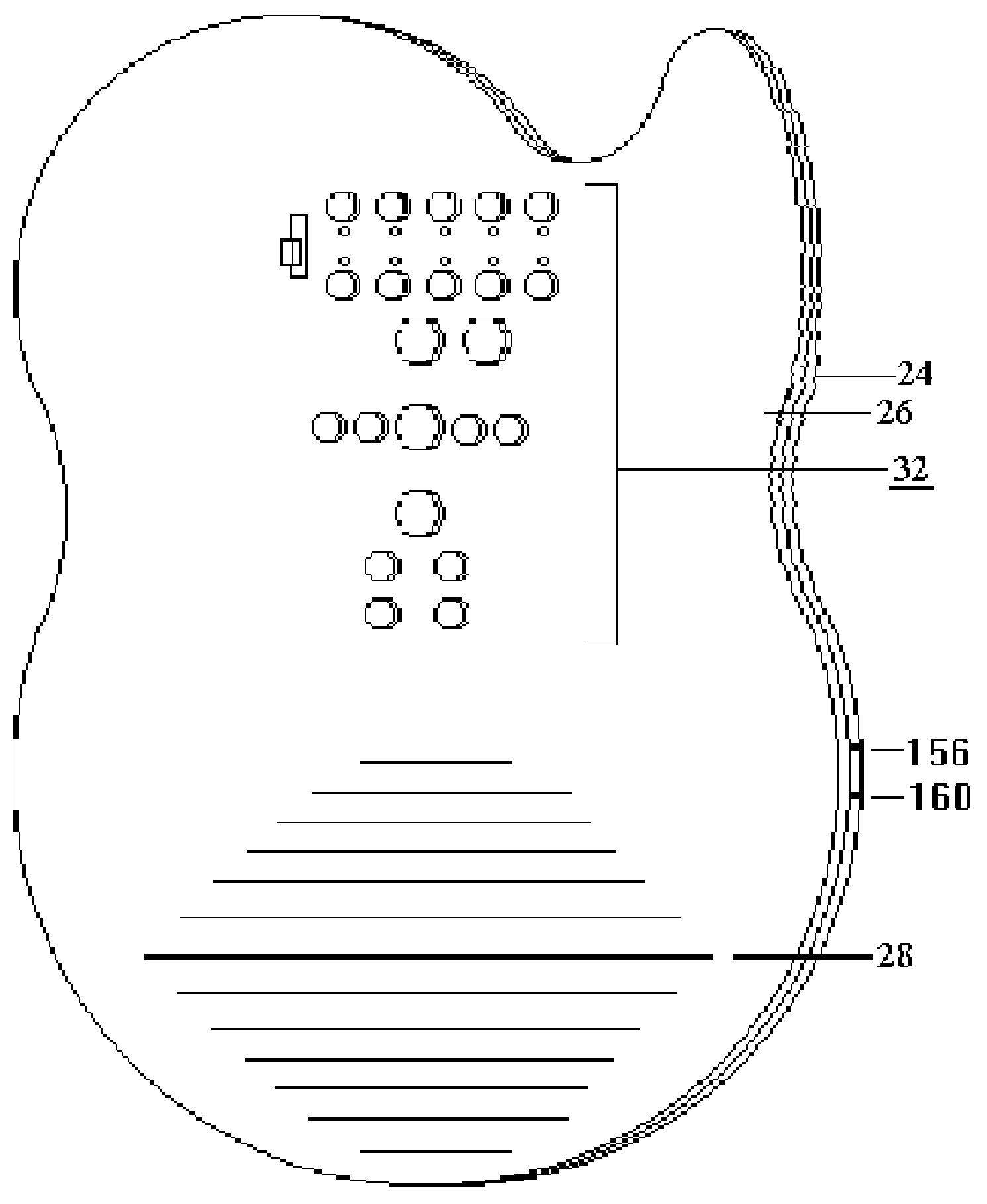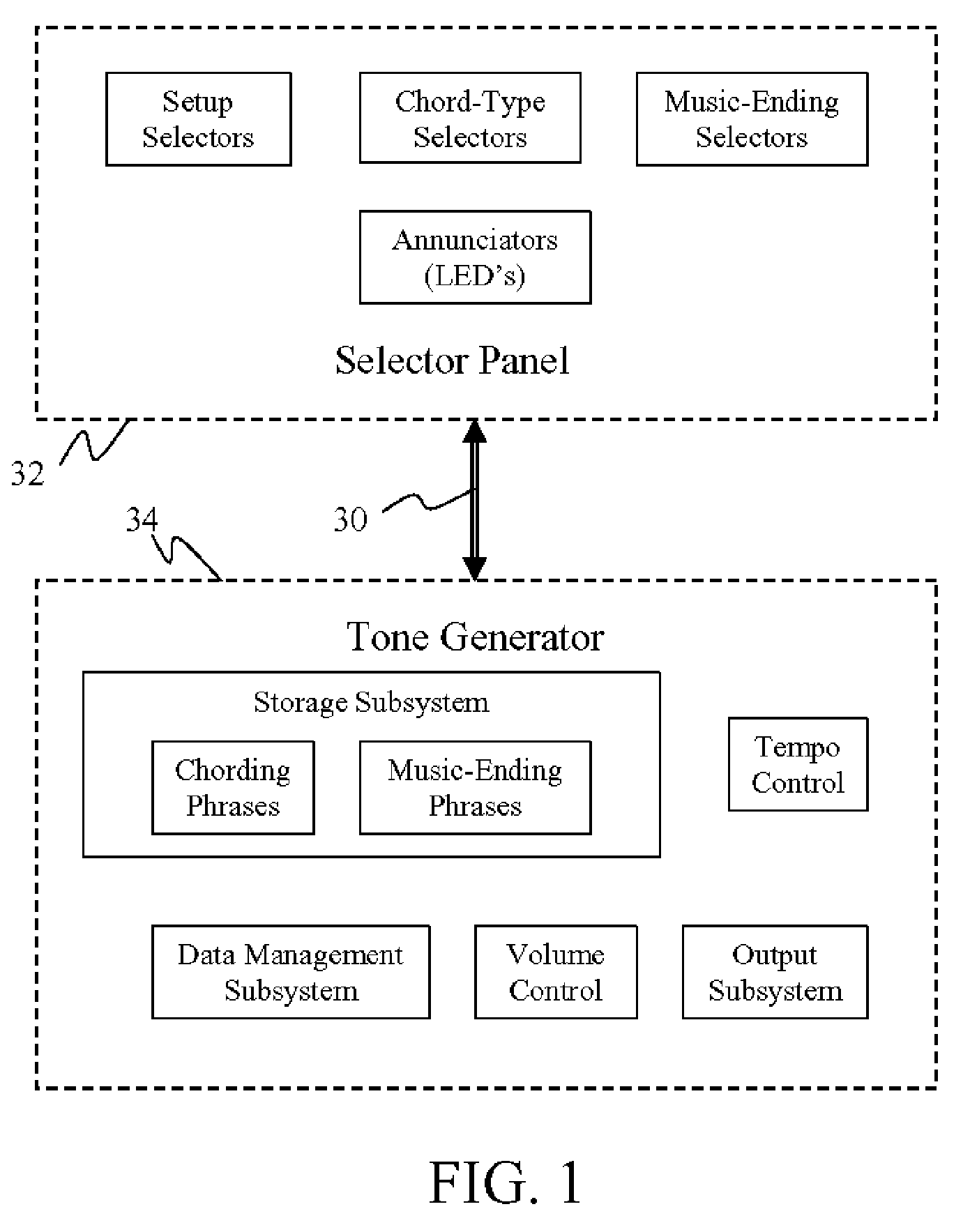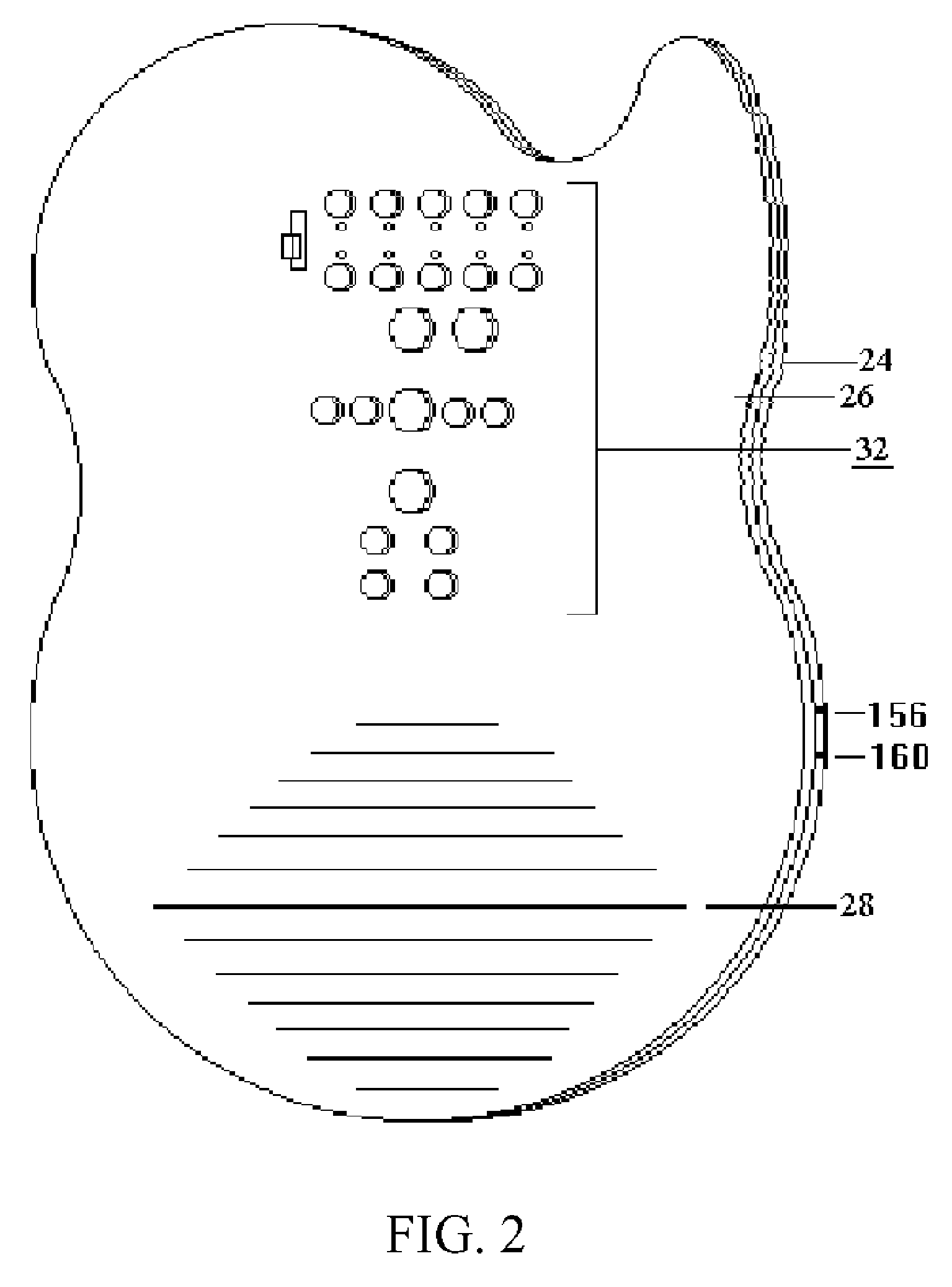Although the desire persists, many people remain musically-challenged and unfulfilled.
Most people can sing on tune, and though many would also enjoy playing their own instrumental accompaniment, they do not learn how to play.
Others may have no difficulty recognizing a tune but run into trouble when it comes to vocalizing that tune.
Singing on key is difficult for some.
Many would-be guitarists would rather decline an opportunity to accompany a group of singing friends than risk embarrassment for being out of practice.
To a novice musician most of these chords would amount to unwanted
clutter.
None of these five instruments would be easy for a novice to play.
They offer no relief to the novice from the need to produce good
rhythm.
Neither do they disclose a means to easily play limited notes between strummed chords.
All apparently synthesize instrument sounds so that the technology available at a given cost will always limit their ability to produce true guitar and banjo sounds.
None of them will produce professional strumming and finger-picking sounds in the hands of a novice.
Their mechanical interfaces lack the simplification necessary for a novice to strum or finger-pick a chord with one finger.
None of the cited examples preclude the most common errors committed by novices as they learn to play, nor do these instruments significantly reduce the amount of practice required in order to produce good music.
Also, their complexities are not conducive to enabling the manufacture of an instrument at a price that is appropriately low for novices.
In actuality however, these instruments are not easier to play, just easier to learn.
At about $400 (in 2004) these instruments seem somewhat expensive for novices.
To Hall, et al. a single chord type throughout a song is not acceptably interesting due to a perceived tendency to become very mechanical,
machine-like and monotonous.
Their patent discloses a keyboard with additional controls, which presents some difficulty for a novice to set-up and play.
With the importance given by Hall, et al. to avoid monotony, their patent fails to disclose either a method for easily playing notes between strummed chords or of finger-picking.
The authors of this patent teach against simply replaying recorded waveshapes, suggesting that simple waveshape
memory type instruments may not be commercially viable, since the mere reading out of recorded external sounds from memory results in rather monotonous playback having insufficient variation in the generated tones to make them interesting.
However, Morikawa, et al. fail to disclose a method for easily playing notes between strummed chords or of finger-picking.
The Omnichord fails to enable a novice to easily produce the music of a good solo rhythm guitar.
The Omnichord is also unable to produce the trueness of guitar and banjo sounds, or human-style finger-picking sounds.
However, in this mode it is unable to play in a guitar voice alone without accompaniment of the rhythm-section.
Set-up is slow since the user must remember instrument numbers, or look them up.
Novices have difficulty knowing which selector to use because associated selectors cannot all be collocated.
These complications may result in many musical errors during play.
The instrument of Wallace, et al. plays only in the key of C, so it is unable to accommodate all voice ranges.
Though described as a toy, this instrument offers a synthesizer having substantial music-generation
programming complexity, but one that requires a person to play note buttons on the body with one hand while playing rhythm on the neck with the other hand.
It plays a limited strum, but cannot play any finger-picking music.
For novices this
system automatically plays accompaniment tailored to previously prepared songs, however this feature is not available to play ad-lib accompaniment music.
The disclosed complex music apparatus is not self-contained, portable, or affordable.
In
spite of the numerous rendition styles offered, this disclosure fails to address easy one-finger chord strumming, chord finger-picking, or
chord music-endings.
While these three patents disclosed various methods of replaying pre-recorded selections from various instruments, none of them addressed a method to play rhythm-guitar or rhythm-banjo music.
In all cases their focus was primarily on recordings of organ or
piano notes which would be replayed via an organ-like keyboard which presents more difficulty than most novices are willing to attempt.
This apparatus is awkward to play since feet lack the playing dexterity of fingers.
Such a multitude of cassettes would be inconvenient to carry, select, and change, precluding rapid set-up changes in a walk-around performance.
This
system for music creation is complex and costly, using a computer to aid the simplified play by a novice.
Although Rigopulos, et al. state that users of their
system need no knowledge of music theory or the ability to play an instrument or keep time, the total system appears too complex for an unassisted novice to set it up from scratch before play.
Even if it is only the set-up and not its use that requires knowledge of music theory and computer skills, the total system with computer would be too costly for most novices.
The system comprises many discrete components and therefore lacks portability during play.
While the disclosed system is said to allow a user to do essentially anything that can be done with any traditional or known instrument, this may be overstated.
However, since it is unable to play an accompaniment of ad-lib
chord music with a single play button, apparently the term sample applies only to
special effects sounds.
Although quite capable, this instrument fails the novice due to the complexity of its many well-intended features.
Further, this instrument does not disclose easy, rapid playing of notes between strummed chords, nor automated music endings.
Takabayashi's apparatus does not enable one to play extemporaneous rhythmic
chord music accompaniment, as a guitar, for an ad-lib singing performance.
As with so many others, Takabayashi's total system is too complex for a novice to set it up from scratch before play as it requires computer skills as well as knowledge of music.
The total system with computer is too costly for most novices.
Comprising many interconnected pieces, the lack of self-containment denies portability to this system during play.
The requirement to press as many as three buttons simultaneously is confusing for novices.
Altogether, the above-mentioned instruments fail to enable the novice to easily produce an ad-lib rhythmic chord music accompaniment, such as rhythm guitar music and rhythm banjo music.
They also fail to enable the novice to easily play embellishing notes between strummed chords for personal creativity.
Their interfaces lack support for a novice to play one-finger chord strumming, chord finger-picking, or music-endings.
Most playing errors have not been precluded, so that some amount of practice is necessary in order to produce good music, and the arrangements of selectors have not been conducive to a novice's playing with confidence without fear of making many musical errors.
While the myriad of previous instruments may be suitably employed for their intended purposes, individually they lack suitability for the purpose which will be satisfied by the
electronic instrument disclosed hereafter.
 Login to View More
Login to View More  Login to View More
Login to View More 


